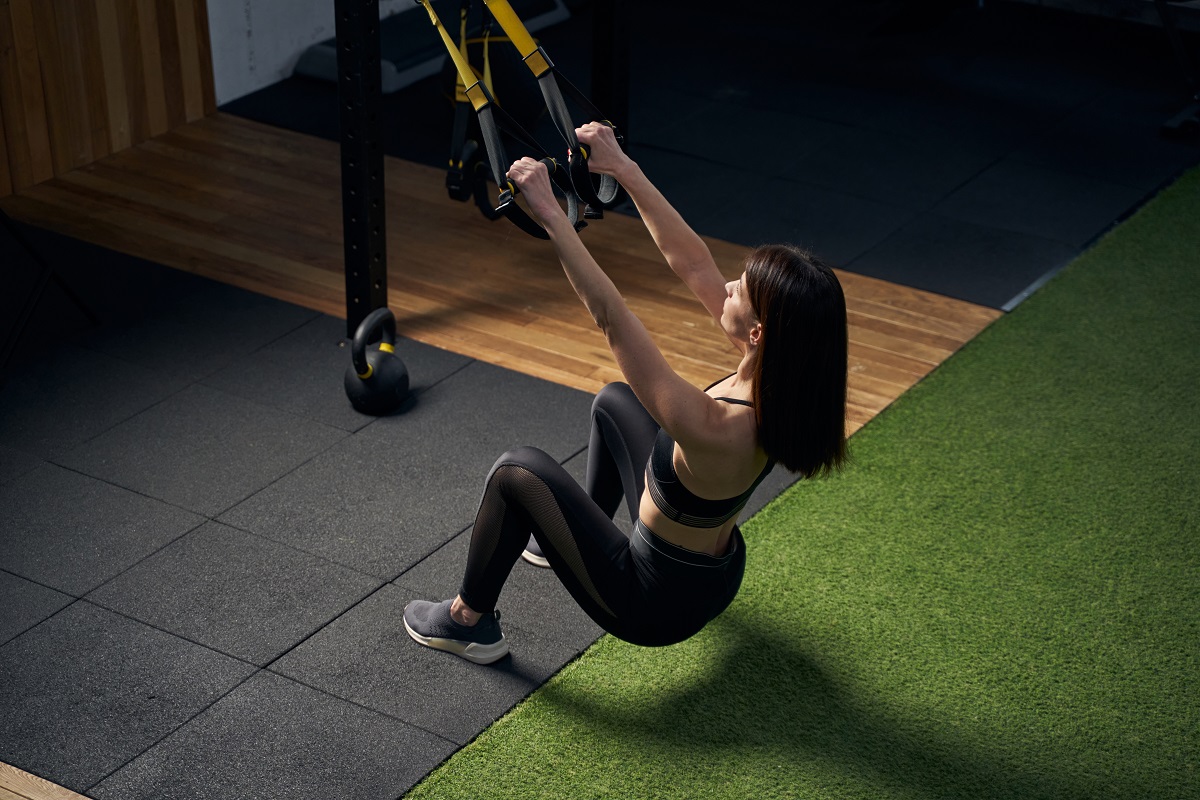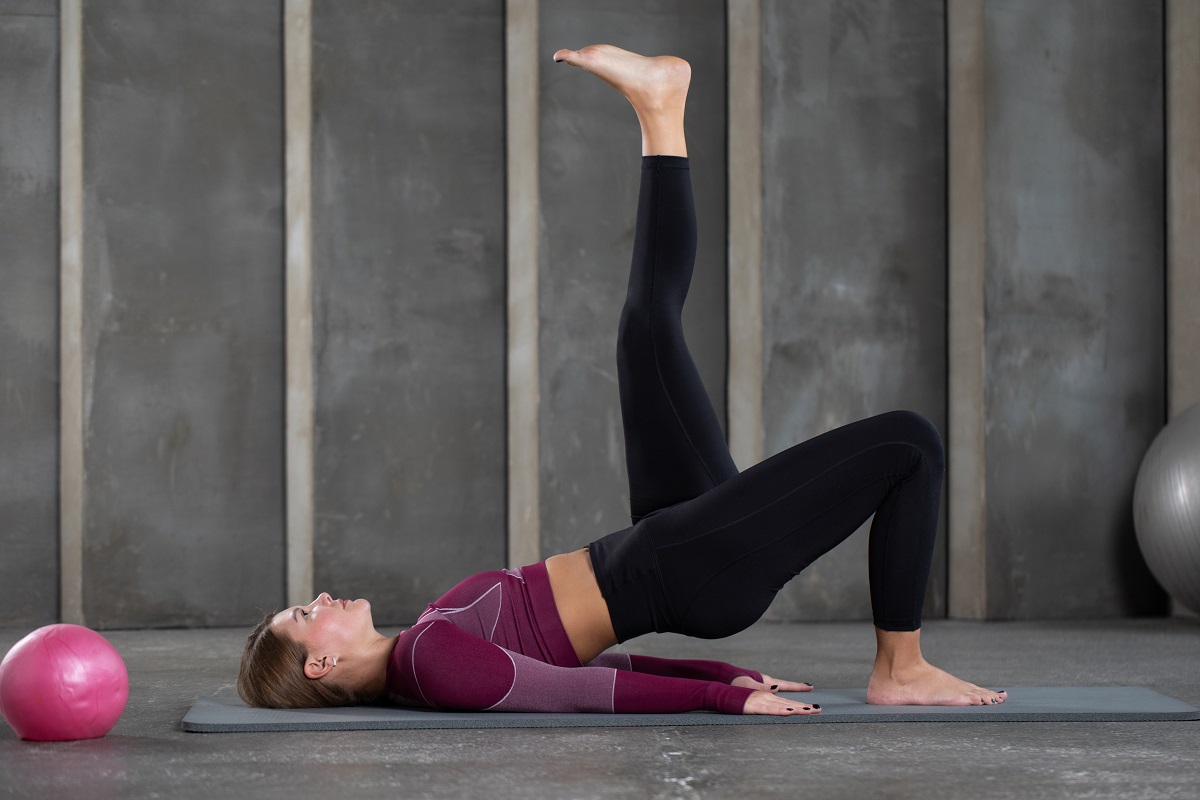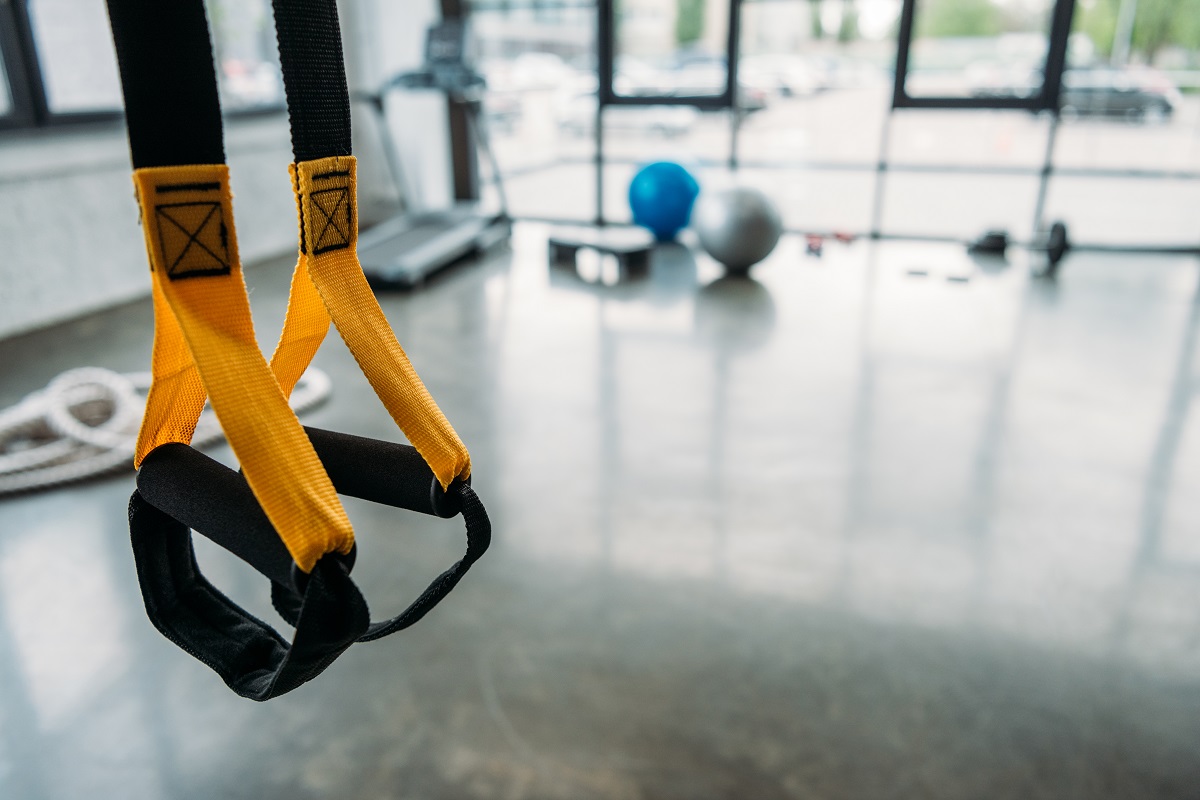Stabilisation endurance training has taken the fitness world by storm and for good reason. This unique approach to training offers a plethora of benefits for individuals of all fitness levels. Whether you’re a beginner, an experienced athlete or a fitness professional, incorporating stabilisation endurance training into your routine can yield impressive results. In this comprehensive blog post, we’ll delve into the world of stabilisation endurance training, covering the benefits, techniques and everything else you need to know.

Benefits of stabilisation endurance training:
Stabilisation endurance training provides a range of benefits, making it a worthwhile addition to your fitness routine. Let’s explore these advantages in greater detail:
Improved Overall Stability:
It focuses on strengthening the muscles responsible for maintaining proper body alignment and posture. As a result, you’ll experience improved stability, allowing you to perform daily tasks and athletic activities more efficiently.
Increased Muscle Endurance:
This type of training emphasizes sustained muscle contractions over extended periods, leading to increased muscle endurance. This, in turn, allows you to perform at higher intensities for longer durations, enhancing overall fitness and sports performance.
Enhanced Core Strength:
Stabilisation endurance training targets the muscles of the core, which include the abdominals, obliques, lower back and hips. A strong core serves as the foundation for efficient movement and reduced risk of injury, making it an essential component of any fitness program.
Reduced Risk of Injury:
By improving muscle imbalances, enhancing joint stability and promoting proper movement patterns, it also helps to reduce the risk of injury. This is particularly beneficial for athletes participating in high-impact or repetitive sports, as well as individuals with sedentary lifestyles or pre-existing musculoskeletal issues.
Improved Balance and Coordination:
Many Stabilisation Endurance exercises require maintaining balance and control while performing dynamic movements. As you progress in your training, you’ll notice improvements in balance and coordination, which can translate to better performance in sports and daily activities.
Boosted Functional Fitness:
Functional fitness refers to the ability to perform everyday tasks efficiently and safely. Stabilisation endurance training incorporates exercises that mimic real-life movements, leading to enhanced functional fitness. This can improve your quality of life and decrease the risk of injury during daily activities.
Increased Flexibility and Mobility:
Incorporating dynamic stretches and full-range-of-motion exercises in Stabilisation endurance training can lead to increased flexibility and mobility. This can reduce the likelihood of muscle imbalances and joint restrictions, allowing for smoother, more efficient movements.
Better Body Composition:
While not primarily focused on weight loss, Stabilisation endurance training can contribute to improvements in body composition. By building lean muscle mass and increasing caloric expenditure during exercise, you may experience reduced body fat levels and a more toned physique.
In summary of benefits of stabilisation endurance training:
Stabilisation endurance training offers a wide array of benefits that can improve your overall fitness, sports performance and quality of life. By incorporating this type of training into your routine, you can experience these advantages first hand and take your fitness journey to new heights.

Techniques for different fitness levels for stabilisation endurance training:
Stabilisation endurance training can be adapted to suit individuals of all fitness levels, from beginners to experienced athletes and fitness professionals. Let’s explore the techniques and considerations for each level:
Beginners:
For beginners, it’s crucial to focus on mastering basic exercises and establishing a strong foundation with proper form and technique. This will reduce the risk of injury and ensure that you’re targeting the correct muscles.
Start with simple exercises, such as planks, glute bridges and bodyweight squats. As you become more comfortable with the movements, gradually progress to more challenging variations.
Aim to perform Stabilisation endurance training at least two to three times per week, with a rest day in between.
Experienced Athletes:
Experienced athletes can incorporate advanced exercises and variations to intensify their workouts and challenge their bodies. This will help to prevent plateauing and maintain progress.
Experiment with exercises such as TRX atomic push-ups, single-leg deadlifts and inverted rows. Consider increasing the number of reps, sets or resistance to push yourself further.
Blend Stabilisation endurance training with sport-specific drills to enhance performance in your chosen activity.
Fitness Professionals:
As fitness professionals, it’s essential to stay updated with the latest research and trends in Stabilisation endurance training. This will ensure that you’re providing the best possible guidance and advice to your clients.
Continuously refine your coaching techniques to help clients improve their form, technique and overall performance.
Develop tailored programs for clients with varying needs and goals. This may involve incorporating Stabilisation endurance training with other forms of exercise, such as strength training or cardiovascular training.
Considerations for all levels:
Regardless of your fitness level, it’s essential to prioritize proper form and technique to minimize the risk of injury and ensure that you’re targeting the correct muscles. – Start with lighter resistance or bodyweight exercises and gradually increase the intensity as you become more comfortable with the movements. – Incorporate a variety of exercises to target different muscle groups and avoid plateauing. – Aim to perform Stabilisation endurance training at least two to three times per week, with a rest day in between. – Listen to your body and progress at a pace that is appropriate for your fitness level and goals.
In summary of techniques for different fitness levels for stabilisation endurance training:
Stabilisation endurance training can be tailored to suit individuals of all fitness levels. By understanding the techniques and considerations for each level, you can effectively incorporate this type of training into your routine and take your fitness journey to new heights.

Exercises and training routines for stabilisation endurance training:
Stabilisation endurance training incorporates a variety of exercises to target different muscle groups. By incorporating these exercises into your training routine, you can enhance stability, endurance and overall fitness. Let’s explore some of the most effective exercises for each muscle group:
Core Exercises:
- Planks: This classic exercise targets the entire core, including the abdominals, obliques and lower back. Start with a basic plank and progress to variations such as side planks or plank jacks.
- Dead bugs: This exercise targets the deep stabilising muscles of the core. Lie on your back with your arms and legs raised, then alternate extending your opposite arm and leg while maintaining a stable core.
- Bird dogs: This exercise targets the back extensors, glutes and core muscles. Start on your hands and knees, then extend your opposite arm and leg while maintaining a stable core.
- Russian twists: This exercise targets the obliques and abdominals. Sit with your knees bent, then rotate your torso while holding a weight or medicine ball.
Upper Body Exercises:
- Push-ups: This classic exercise targets the chest, shoulders and triceps. Start with a basic push-up and progress to variations such as diamond push-ups or plyometric push-ups.
- Inverted rows: This exercise targets the back, biceps and core muscles. Use a TRX or suspension trainer to perform rows while suspended off the ground.
- Shoulder taps: This exercise targets the shoulders, triceps and core muscles. Start in a push-up position, then tap your opposite shoulder while maintaining a stable core.
- TRX chest presses: This exercise targets the chest, triceps and shoulders. Use a TRX or suspension trainer to perform chest presses while suspended off the ground.
Lower Body Exercises:
- Squats: This classic exercise targets the quadriceps, glutes and hamstrings. Start with a bodyweight squat and progress to variations such as jump squats or single-leg squats.
- Lunges: This exercise targets the glutes, hamstrings and quadriceps. Start with a basic lunge and progress to variations such as reverse lunges or walking lunges.
- Glute bridges: This exercise targets the glutes, hamstrings and lower back. Lie on your back with your knees bent, then lift your hips while maintaining a stable core.
- Single-leg Romanian deadlifts: This exercise targets the glutes, hamstrings and lower back. Stand on one leg, then hinge forward while maintaining a stable core.
Training Routine:
To effectively incorporate Stabilisation endurance training into your routine, aim to perform at least two to three sessions per week, with a rest day in between. – Incorporate a variety of exercises from each muscle group and aim for a total of 8-12 exercises per session. – Perform each exercise for 12-15 reps or 30-60 seconds, with minimal rest in between. – Use a variety of equipment and tools, such as dumbbells, resistance bands or suspension trainers, to challenge the body in different ways. – Progress the intensity over time by increasing the resistance, reps, sets or duration of each exercise.
In summary of exercises and training routines for stabilisation endurance training:
Stabilisation endurance training incorporates a variety of exercises to target different muscle groups and enhance stability, endurance and overall fitness. By incorporating these exercises into your training routine and gradually progressing the intensity, you can take your fitness journey to new heights.

Equipment and Tools for stabilisation endurance training:
Stabilization endurance training is a type of exercise that focuses on improving muscular stability and endurance. It can be performed using minimal equipment, which makes it accessible and cost-effective for people who want to incorporate it into their fitness routine. Here are some of the equipment and tools that can be used for stabilization endurance training:
Stability balls:
Stability balls are large inflatable balls that can be used for various exercises, including core training, balance and stability. They are excellent tools for improving posture, balance and coordination while also challenging the muscles of the core, legs and upper body.
TRX suspension trainers:
TRX suspension trainers are versatile pieces of equipment that use straps and handles to create a suspended bodyweight workout. They can be used for a wide range of exercises, including squats, lunges, push-ups and rows. TRX suspension training is an excellent way to develop core stability, balance and functional strength.
Resistance bands:
Resistance bands are portable, lightweight and versatile tools that can be used for a variety of exercises. They come in different resistance levels and can be used to target specific muscles or muscle groups. Resistance bands can be used for upper body, lower body and core exercises.
Yoga mats:
Yoga mats are essential tools for stabilisation endurance training, as they provide a stable and cushioned surface for exercises that involve lying down or kneeling. They are also useful for yoga, Pilates and other exercises that require a non-slip surface.
Foam rollers:
Foam rollers are cylindrical tools that can be used for self-massage and myofascial release. They are excellent tools for reducing muscle soreness and improving mobility and flexibility. Foam rollers can also be used for balance and stability exercises.
In conclusion:
Stabilization endurance training is an effective way to improve muscular stability and endurance and it can be performed using minimal equipment. Stability balls, TRX suspension trainers, resistance bands, yoga mats and foam rollers are some of the equipment and tools that can be used for stabilisation endurance training. These tools are versatile, portable and cost-effective, making them an excellent choice for people who want to incorporate it into their fitness routine.
Scientific Studies and References for stabilisation endurance training:
Numerous studies support the benefits of Stabilisation endurance training:
- “Core Stability Exercise Principles,” by Dr. Stuart McGill (2009): Highlights the importance of core stability for overall fitness and injury prevention.
- “The Role of Core Stability in Athletic Function,” by Kibler et al. (2006): Discusses the link between core stability and sports performance.
- “Effects of an eight-week stabilisation endurance Training Program on Trunk Muscle Function and Performance,” by Sekendiz et al. (2017): Demonstrates the improvements in trunk muscle function and performance following an eight-week Stabilisation Endurance training program.

Debunking Misconceptions and Myths about stabilisation endurance training:
Several misconceptions surround stabilisation endurance training, but we’re here to set the record straight:
Myth 1:
Stabilisation endurance training is only for athletes.
Fact: This type of training benefits individuals of all fitness levels and can be tailored to meet specific needs and goals.
Myth 2:
Stabilisation endurance training is all about holding static poses.
Fact: While static exercises play a role, stabilisation endurance training also involves dynamic movements that challenge the body in various planes of motion.
Limitations and Precautions for stabilisation endurance training:
Before embarking on a stabilisation endurance training journey, be mindful of these limitations and precautions:
- Consult a healthcare professional or qualified fitness expert before starting any new exercise program.
- Always prioritize proper form and technique to minimize the risk of injury.
- Listen to your body and progress at a pace that is appropriate for your fitness level and goals.
![]()
Tracking Progress:
To measure progress and track improvements in stabilisation endurance training, consider these tips:
- Keep a workout journal to record exercises, reps, sets and any variations.
- Use a fitness tracker or app to monitor workout duration, intensity and recovery.
- Periodically reassess your performance with functional movement assessments or sport-specific tests.
Success Story: Meet Jane
Jane, a busy mum of two, struggled to find time for exercise. After discovering stabilisation endurance training, she started incorporating short, focused workouts into her daily routine. Within a few months, Jane noticed improvements in her core strength, balance and overall fitness.
Integrating Stabilisation Endurance Training into Your Fitness Routine:
To seamlessly integrate stabilisation endurance training into your fitness program, follow these steps:
- Assess your current fitness level, goals and time constraints.
- Choose exercises and equipment that align with your needs and preferences.
- Schedule regular stabilisation endurance training sessions, aiming for at least two to three times per week.
Complementing Other Types of Training or Sports:
Stabilisation endurance training can enhance other forms of training or sports performance:
- Strength Training: Improve stability and core strength to support heavier lifts.
- Cardiovascular Training: Boost endurance and efficiency for activities such as running or cycling.
- Sport-Specific Training: Enhance balance, coordination and injury prevention in various sports.
Nutrition and Recovery Tips for Stabilisation endurance training:
Proper nutrition and recovery are crucial components of any stabilisation endurance training program:
- Consume a balanced diet rich in lean protein, complex carbohydrates and healthy fats.
- Stay hydrated by drinking plenty of water throughout the day.
- Prioritize sleep and implement relaxation techniques to promote recovery.
- Utilise foam rolling or massage to alleviate muscle soreness and improve mobility.

The Role of TRX Training:
TRX training plays a significant role in stabilisation endurance training, as it utilises suspension straps to challenge the body in various planes of motion. TRX exercises are versatile and can be easily adapted to suit different fitness levels and goals. As a qualified TRX trainer, I can attest to the immense benefits that TRX training can bring to one’s training journey.
Conclusion for stabilisation endurance training:
Stabilisation endurance training offers a myriad of benefits for individuals of all fitness levels. By understanding the techniques, exercises and equipment involved, as well as debunking common misconceptions, you can effectively integrate this type of training into your routine. Remember to consult with a healthcare professional or qualified fitness expert before beginning any new exercise program and prioritize proper form and technique.
With the right approach, it can complement other types of training or sports, helping you reach your full athletic potential. Don’t forget to pay attention to nutrition and recovery, as these are crucial components for success. TRX training, in particular, can be a powerful addition to your training program.
By incorporating stabilisation endurance training into your fitness routine, you can unlock a world of benefits, from improved stability and muscle endurance to enhanced core strength and reduced risk of injury. So, why wait? Embark on your training journey today and experience the transformative effects for yourself by finding a personal trainer.
NASM pyramid
The NASM (National Academy of Sports Medicine) training model consists of five phases, which provide a structured progression in designing exercise programs. These phases are:
- Stabilization endurance (covered in this article)
- Strength endurance
- Muscular development
- Maximal Strength
- Power
These five phases in the NASM training model provide a systematic approach to progressively challenge the body, address different training goals, and optimize overall fitness and performance.
Happy training!
